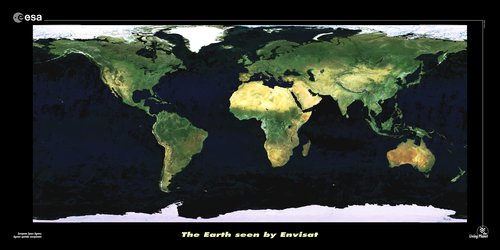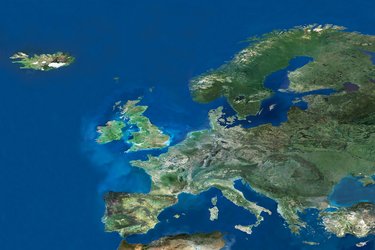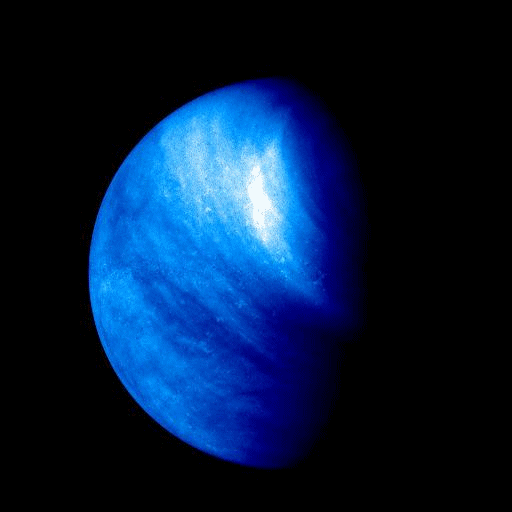Accept all cookies Accept only essential cookies See our Cookie Notice

About ESA
The European Space Agency (ESA) is Europe’s gateway to space. Its mission is to shape the development of Europe’s space capability and ensure that investment in space continues to deliver benefits to the citizens of Europe and the world.
Highlights
ESA - United space in Europe
This is ESA ESA facts Member States & Cooperating States Funding Director General Top management For Member State Delegations European vision European Space Policy ESA & EU Space Councils Responsibility & Sustainability Annual Report Calendar of meetings Corporate newsEstablishments & sites
ESA Headquarters ESA ESTEC ESA ESOC ESA ESRIN ESA EAC ESA ESAC Europe's Spaceport ESA ESEC ESA ECSAT Brussels Office Washington OfficeWorking with ESA
Business with ESA ESA Commercialisation Gateway Law at ESA Careers Cyber resilience at ESA IT at ESA Newsroom Partnerships Merchandising Licence Education Open Space Innovation Platform Integrity and Reporting Administrative Tribunal Health and SafetyMore about ESA
History ESA Historical Archives Exhibitions Publications Art & Culture ESA Merchandise Kids Diversity ESA Brand Centre ESA ChampionsLatest
Space in Member States
Find out more about space activities in our 23 Member States, and understand how ESA works together with their national agencies, institutions and organisations.
Science & Exploration
Exploring our Solar System and unlocking the secrets of the Universe
Go to topicAstronauts
Missions
Juice Euclid Webb Solar Orbiter BepiColombo Gaia ExoMars Cheops Exoplanet missions More missionsActivities
International Space Station Orion service module Gateway Concordia Caves & Pangaea BenefitsLatest
Space Safety
Protecting life and infrastructure on Earth and in orbit
Go to topicAsteroids
Asteroids and Planetary Defence Asteroid danger explained Flyeye telescope: asteroid detection Hera mission: asteroid deflection Near-Earth Object Coordination CentreSpace junk
About space debris Space debris by the numbers Space Environment Report In space refuelling, refurbishing and removingSafety from space
Clean Space ecodesign Zero Debris Technologies Space for Earth Supporting Sustainable DevelopmentLatest
Applications
Using space to benefit citizens and meet future challenges on Earth
Go to topicObserving the Earth
Observing the Earth Future EO Copernicus Meteorology Space for our climate Satellite missionsCommercialisation
ESA Commercialisation Gateway Open Space Innovation Platform Business Incubation ESA Space SolutionsLatest
Enabling & Support
Making space accessible and developing the technologies for the future
Go to topicBuilding missions
Space Engineering and Technology Test centre Laboratories Concurrent Design Facility Preparing for the future Shaping the Future Discovery and Preparation Advanced Concepts TeamSpace transportation
Space Transportation Ariane Vega Space Rider Future space transportation Boost! Europe's Spaceport Launches from Europe's Spaceport from 2012Latest

Global Mars in colour
Thank you for liking
You have already liked this page, you can only like it once!
To mark 20 years of ESA’s Mars Express, the High Resolution Stereo Camera (HRSC) team has produced a new global colour mosaic: Mars as never seen before. The mosaic reveals the planet’s surface colour and composition in spectacular detail.
Reliably determining accurate surface colours from orbit is difficult due to the variable amounts of dust in Mars’s atmosphere, leading to many mosaic images taking on a patchwork-like appearance; suppressing this effect in image processing usually reduces variations in colour between different parts of Mars. However, to create this mosaic, the HRSC team instead colour-referenced each constituent image using a colour model derived from high altitude imagery, allowing them to preserve colour variations and reveal a far richer colour view of Mars than has been seen before.
This is a simulated view of Mars from a vantage point 2500 km above the colossal Valles Marineris canyon system, with enhanced colour and contrast (at this relatively low altitude, the planet’s polar caps are not visible). It is a composite of red, green and blue filter mosaics with the colour band values stretched individually, and has a spatial resolution of 2 km per pixel (although higher resolution data products are possible and already in the works). The image does not show the true beige to brown colours of Mars as seen from orbit – the contrast of each colour channel is stretched to highlight variations.
Darker grey-toned areas of Mars represent grey-black basaltic sands of volcanic origin; lighter patches show clay and sulphate minerals; and the large scar across the planet's face is Valles Marineris.
Alt-text: This image shows the globe of Mars set against a dark background. The disc of the planet features yellow, orange, blue and green patches, all with an overall muted grey hue, representing the varying composition of the surface.
-
CREDIT
ESA/DLR/FU Berlin/G. Michael -
LICENCE
CC BY-SA 3.0 IGO or ESA Standard Licence
(content can be used under either licence)

Mosaic of global land cover images taken by MERIS

Building a mosaic of Mars

MERIS mosaic of Europe

Global dynamics of Venus northern hemisphere















 Germany
Germany
 Austria
Austria
 Belgium
Belgium
 Denmark
Denmark
 Spain
Spain
 Estonia
Estonia
 Finland
Finland
 France
France
 Greece
Greece
 Hungary
Hungary
 Ireland
Ireland
 Italy
Italy
 Luxembourg
Luxembourg
 Norway
Norway
 The Netherlands
The Netherlands
 Poland
Poland
 Portugal
Portugal
 Czechia
Czechia
 Romania
Romania
 United Kingdom
United Kingdom
 Slovenia
Slovenia
 Sweden
Sweden
 Switzerland
Switzerland

























